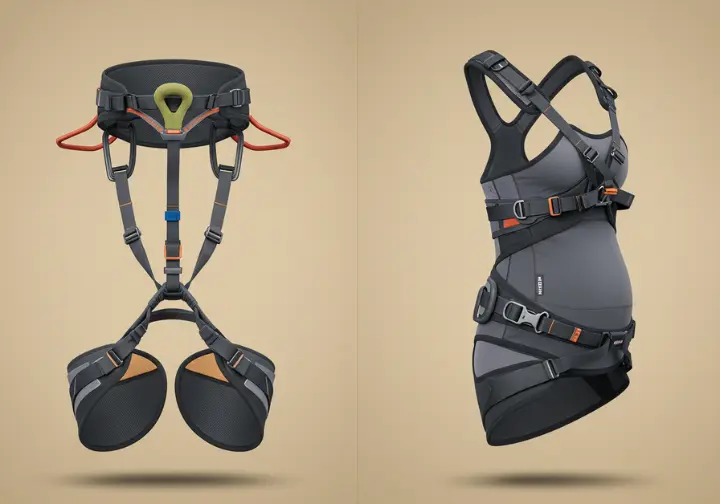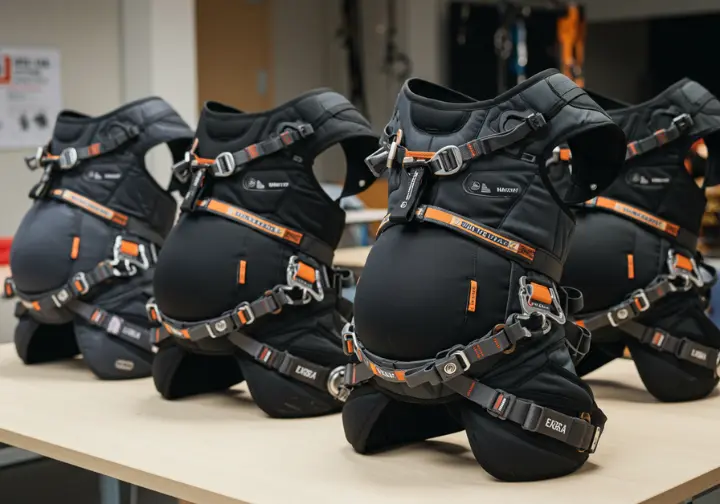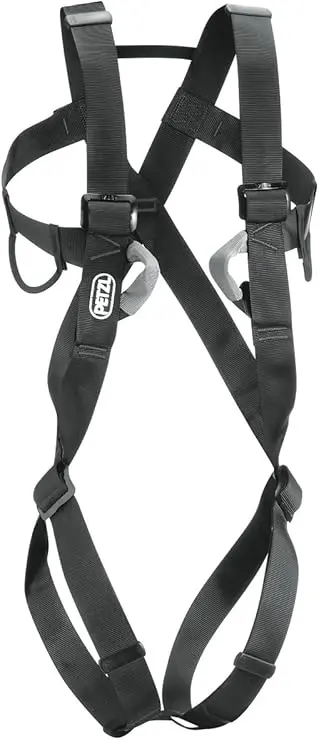In this article
This guide provides an in-depth look at the most critical piece of gear for expectant climbers: the pregnancy climbing harness. We’ll explore the medical reasoning, safety standards, and essential technique shifts that go hand-in-hand with this decision. This is a pregnancy journey familiar to many in the community, including pro climbers like Meagan Martin who have shared their experiences. Discover how to choose the safest full-body harness, understand why standard harnesses become unsuitable, and feel confident making informed decisions for you and your baby on the wall. We will cover everything from understanding necessary maternity consultations to our top product recommendations and critical safety warnings for rock climbing.
The ‘Why’ Before the ‘Buy’: Medical Guidance and Safety First

Before you even look at a new harness, it’s vital to ground your climbing decisions in solid medical advice and established safety protocols. We’ll begin by covering the conversations you must have with your pregnancy healthcare advisor and the official guidelines from leading health organizations, creating a foundation of safety for your climbing journey while pregnant.
Consulting Your Doctor: The Non-Negotiable First Step
Your first and most important step is to have a thorough discussion with a qualified healthcare provider, like an OB-GYN or midwife. All pregnancies are unique, and only a medical professional with your full health history can provide harness advice that is safe and tailored specifically to you and your baby’s needs. This conversation is key whether this is your first pregnancy or you’re navigating a second pregnancy. It is not about getting a simple “yes” or “no” but about understanding how you might approach climbing safely if it’s deemed appropriate for your specific situation. A provider can assess any personal risk factors that would make the activity unsafe for your pregnant body.
This guide is designed to provide you with information to support that crucial conversation with your doctor; it is not a substitute for professional medical advice. Remember that pregnancy is a dynamic process, and what is safe in the first trimester might not be in the second or third. Ongoing communication with your provider is key to adapting your activities as your body changes. Professional medical guidance is the paramount prerequisite to continuing any climbing activity during your pregnancy term.
ACOG Guidelines and High-Risk Activities
The American College of Obstetricians and Gynecologists (ACOG) provides foundational advice for physical activity and fitness during pregnancy. For uncomplicated pregnancies, they recommend at least 150 minutes of moderate-intensity aerobic activity per week. Climbing, when modified, can be an excellent way to meet these recommendations. A key piece of ACOG guidance is the “talk test,” which suggests you should be able to carry on a conversation while exercising. This is a simple way for pregnant climbers to monitor their exertion level, as pregnancy is not a time to push to previous physical limits.
Crucially, ACOG advises avoiding activities with a high risk of falling or abdominal trauma, especially after the first trimester. While “rock climbing” is sometimes listed as an activity to avoid, this advice generally refers to its higher-risk forms. The spirit of ACOG’s safety concerns can be met by adapting your climbing style significantly. By transitioning to top rope climbing to eliminate lead falls and using a full-body harness to protect the abdomen, you can mitigate the primary risks. Any decision to continue to climb must be based on a personalized risk assessment conducted with your doctor.
Recognizing “Red Flag” Warning Signs
A critical component of staying safe is knowing your body’s warning signs and understanding when to stop exercising immediately. Your healthcare provider will give you a list of “red flags,” and it is your responsibility to be vigilant about them every time you climb. These symptoms are non-negotiable signals to cease activity and consult your doctor or midwife.
Key warning signs include vaginal bleeding, dizziness or feeling faint, chest pain, and headaches. Other crucial red flags involve abdominal issues. If you experience pain around your belly, persistent cramps, regular and painful uterine contractions, or any fluid leaking, you must stop climbing and seek medical attention. A noticeable decrease in fetal movement is another urgent signal to contact your provider. Swelling or pain in your lower legs, specifically calf pain or swelling, can be a sign of a blood clot and is considered a medical red flag for pregnant folks.
From Sit to Full-Body: Understanding the Essential Harness Transition

The single most important gear adaptation for a pregnant climber is the harness. As your body changes, a standard sit harness becomes unsuitable and dangerous. Here, we’ll break down exactly why this harness adaptation is necessary, what to look for in a full-body harness, and the critical importance of using only certified safety equipment.
Why a Standard Climbing Harness Becomes Unsafe
A standard climbing harness, or a traditional sit harness, is designed with a waist belt that cinches directly across your midsection. As your pregnancy progresses and your uterus grows, this design poses a significant risk. Any pressure from that waist belt on your growing baby bump can be dangerous in a fall, directing impact forces toward the uterus and baby. A harness’s primary function is to distribute fall forces safely across the body’s strongest structures, like the hips and pelvis. As the uterus rises above the belly button, typically during the second trimester, the belt-style harness is no longer positioned safely below the baby.
Most resources recommend making the switch from a regular harness to a full-body harness around 16-20 weeks of pregnancy, or as soon as a normal harness feels tight. This transition is not optional; it is a fundamental safety requirement for continuing to climb during the second and third trimesters. Continuing to use a sit-style harness goes against the core safety principle of avoiding abdominal pressure.
Anatomy of a Pregnancy-Suitable Full-Body Harness
A full-body harness is designed to solve the safety problem created by a growing abdomen. It integrates shoulder straps with leg loops, moving the primary tie-in point from the waist up to the sternum. This high tie-in point and integrated shoulder support system, sometimes called a chest harness, distributes the forces of a fall across the torso and shoulders, intentionally keeping all pressure away from the abdomen.
When choosing a body harness, adjustability is paramount. The harness design must have ample room for adjustment in the shoulder straps and around the legs to accommodate your changing body. Comfort is also a key consideration; look for models with wide webbing. It’s important to be prepared for a different sensation when climbing; the high tie-in point where the rope ties in changes your center of gravity while hanging from a dynamic rope and can feel awkward at first.
Critical Safety: The Dangers of DIY or Non-Certified Gear
Under no circumstances should a climber attempt to create a homemade harness or modify existing gear to accommodate a pregnancy. Climbing equipment is life-saving Personal Protective Equipment (PPE), and any alteration voids its safety certification. Certified climbing harnesses undergo rigorous testing to meet stringent standards set by bodies like the UIAA (International Climbing and Mountaineering Federation) and CE.
The failure points in a DIY harness/utility harness are severe, from amateur stitching ripping under load to non-rated buckles breaking entirely. The UIAA explicitly warns against any modifications. It is vital to only purchase gear from reputable manufacturers that clearly state their products meet UIAA safety standards. Never trust your safety or the safety of your babies to an uncertified, homemade, or altered rock preggy harness.
Best Climbing Harnesses for Pregnancy: Our 2025 Recommendations

Choosing the right climbing harness for pregnancy is a critical safety decision. Our recommendations for pregnancy harnesses are based on criteria essential for expectant mothers: proven safety, adjustability to accommodate a changing body, and a design that keeps all pressure off the abdomen. Here is the best available harness option we’ve found for the pregnant climber.
The Top Choice for Adjustability and Trust: Petzl 8003
A widely trusted option from a leading brand, this full-body harness is known for its robust construction and excellent adjustability, making it a go-to choice for pregnant climbers. Unlike some rental gear you might find at a local climbing gym, this harness/utility tool is specifically designed to distribute weight across the torso and shoulders, keeping the abdomen free from pressure during belaying and climbing.
Petzl 8003 Full-Body Harness | Excellent adjustability and a trusted design that keeps pressure off-abdomen

The Petzl 8003 full body harness is technically designed for mountaineering but its features make it an excellent choice for pregnancy. It is made from durable, high-strength polyester webbing and features fully adjustable shoulder straps and leg loops, allowing for a precise and secure fit as your body changes.
Reason to Buy: This harness is the top choice for climbers who prioritize maximum safety and adjustability above all else. Its trusted, certified design offers the highest level of security and peace of mind by ensuring all forces are kept away from the abdomen, making it a reliable option throughout pregnancy.
PROS
- Excellent Adjustability: The harness features fully adjustable shoulder straps and leg loops, which users appreciate for ensuring a secure and comfortable fit for different body types and over various clothing layers.
- Trusted Safety & Design: It holds multiple safety certifications (CE, EN, UIAA), providing significant peace of mind about its reliability for critical applications.
- Effective Pressure Distribution: The design’s focus on keeping pressure off the abdomen is a major pro, enhancing comfort during extended wear or while hanging.
CONS
- Bulky for Rock Climbing: While excellent for mountaineering, its full-body design can be bulkier and less comfortable for pure rock climbing when compared to a standard sit harness.
- Limited Gear Loops: Only two flexible equipment loops might be insufficient for climbers carrying a large rack of gear for more complex routes.
- Specific Use Case: Primarily designed for mountaineering and glacier travel, it might be considered overkill or less streamlined for simpler top-rope climbing activities.
Conclusion: Key Takeaways on Choosing Your Pregnancy Harness
- Medical Consultation is Paramount: Your top priority is to have an open conversation with your OB-GYN or midwife. Their personalized medical advice is the only way to ensure climbing is a safe choice for your specific pregnancy.
- The Full-Body Harness is Non-Negotiable: As your baby bump grows, typically starting in the second trimester, switching from a sit harness to a maternity harness is an essential safety measure to protect your abdomen from pressure.
- Prioritize Adjustability and Certified Safety: When selecting a harness, look for one with maximum adjustability. Most importantly, ensure it is from a reputable brand and is certified by safety standards bodies like the UIAA and/or CE. Many postpartum climbers also appreciate the adjustability as they return to the sport.
- Adapt Your Climbing Style: A pregnancy-safe harness is only one part of the equation. It must be paired with a shift in climbing style, primarily moving to a tight top-rope and avoiding lead falls or high-impact bouldering.
Frequently Asked Questions about Climbing Harnesses for Pregnancy
When should I switch from my regular harness to a full-body harness? +
Can I lead climb or boulder while pregnant if I’m wearing a full-body harness? +
Is it safe to buy a used Mad Rock Mountain Mama harness? +
What are the most important features to look for in a pregnancy harness? +
We are a participant in the Amazon Services LLC Associates Program, an affiliate advertising program designed to provide a means for sites to earn advertising fees by advertising and linking to Amazon.com. As an Amazon Associate I earn from qualifying purchases. We also participate in other affiliate programs. The information provided on this website is provided for entertainment purposes only. We make no representations or warranties of any kind, expressed or implied, about the completeness, accuracy, adequacy, legality, usefulness, reliability, suitability, or availability of the information, or about anything else. Any reliance you place on the information is therefore strictly at your own risk. Additional terms are found in the terms of service.











